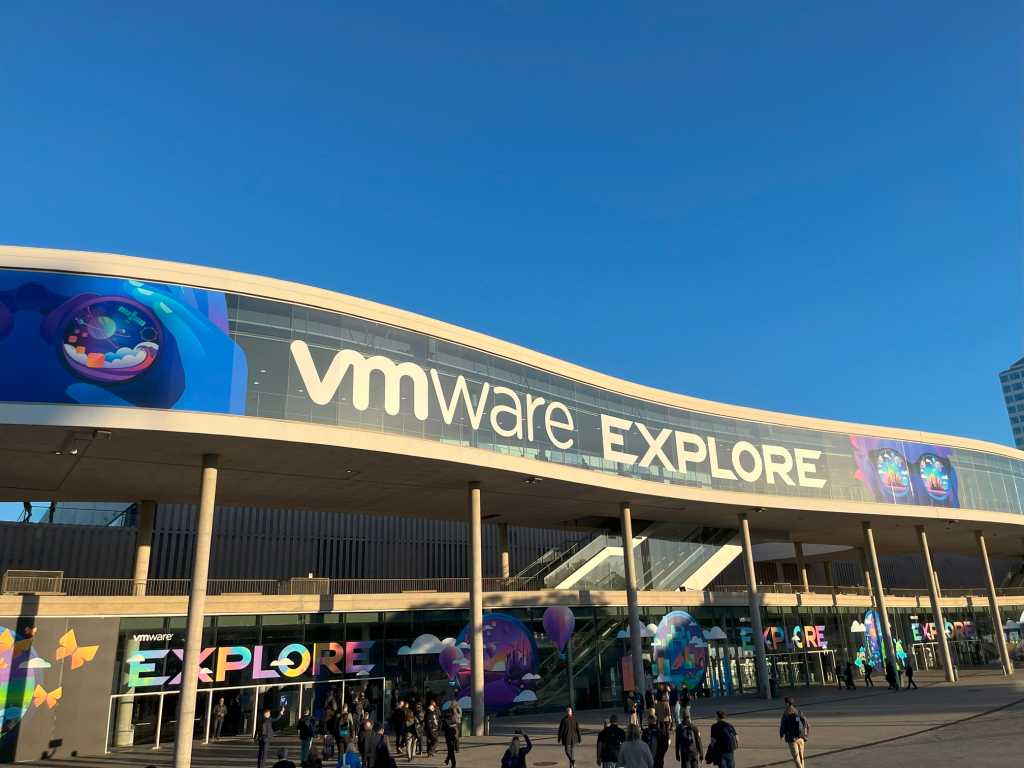
As we have already seen with the basic components (Part 1, Part 2), the Hadoop ecosystem is constantly evolving and being optimized for new applications. As a result, various tools and technologies have developed over time that make Hadoop more powerful and even more widely applicable. As a result, it goes beyond the pure HDFS & MapReduce platform and offers, for example, SQL, as well as NoSQL queries or real-time streaming.
Hive/HiveQL
Apache Hive is a data warehousing system that allows for SQL-like queries on a Hadoop cluster. Traditional relational databases struggle with horizontal scalability and ACID properties in large datasets, which is where Hive shines. It enables querying Hadoop data through a SQL-like query language, HiveQL, without needing complex MapReduce jobs, making it accessible to business analysts and developers.
Apache Hive therefore makes it possible to query HDFS data systems using a SQL-like query language without having to write complex MapReduce processes in Java. This means that business analysts and developers can use HiveQL (Hive Query Language) to create simple queries and build evaluations based on Hadoop data architectures.
Hive was originally developed by Facebook for processing large volumes of structured and semi-structured data. It is particularly useful for batch analyses and can be operated with common business intelligence tools such as Tableau or Apache Superset.
The metastore is the central repository that stores metadata such as table definitions, column names, and HDFS location information. This makes it possible for Hive to manage and organize large datasets. The execution engine, on the other hand, converts HiveQL queries into tasks that Hadoop can process. Depending on the desired performance and infrastructure, you can choose different execution engines:
- MapReduce: The classic, slower approach.
- Tez: A faster alternative to MapReduce.
- Spark: The fastest option, which runs queries in-memory for optimal performance.
To use Hive in practice, various aspects should be considered to maximize performance. For example, it is based on partitioning, so that data is not stored in a huge table, but in partitions that can be searched more quickly. For example, a company’s sales data can be partitioned by year and month:
CREATE TABLE sales_partitioned (
customer_id STRING,
amount DOUBLE
) PARTITIONED BY (year INT, month INT);This means that only the specific partition that is required can be accessed during a query. When creating partitions, it makes sense to create ones that are queried frequently. Buckets can also be used to ensure that joins run faster and data is distributed evenly.
CREATE TABLE sales_bucketed (
customer_id STRING,
amount DOUBLE
) CLUSTERED BY (customer_id) INTO 10 BUCKETS;In conclusion, Hive is a useful tool if structured queries on huge amounts of data are to be possible. It also offers an easy way to connect common BI tools, such as Tableau, with data in Hadoop. However, if the application requires many short-term read and write accesses, then Hive is not the right tool.
Pig
Apache Pig takes this one step further and enables the parallel processing of large amounts of data in Hadoop. Compared to Hive, it is not focused on data reporting, but on the ETL process of semi-structured and unstructured data. For these data analyses, it is not necessary to use the complex MapReduce process in Java; instead, simple processes can be written in the proprietary Pig Latin language.
In addition, Pig can handle various file formats, such as JSON or XML, and perform data transformations, such as merging, filtering, or grouping data sets. The general process then looks like this:
- Loading the Information: The data can be pulled from different data sources, such as HDFS or HBase.
- Transforming the data: The data is then modified depending on the application so that you can filter, aggregate, or join it.
- Saving the results: Finally, the processed data can be stored in various data systems, such as HDFS, HBase, or even relational databases.
Apache Pig differs from Hive in many fundamental ways. The most important are:
| Attribute | Pig | Hive |
| Language | Pig Latin (script-based) | HiveQL (similar to SQL) |
| Target Group | Data Engineers | Business Analysts |
| Data Structure | Semi-structured and unstructured data | Structured Data |
| Applications | ETL processes, data preparation, data transformation | SQL-based analyses, reporting |
| Optimization | Parallel processing | Optimized, analytical queries |
| Engine-Options | MapReduce, Tez, Spark | Tez, Spark |
Apache Pig is a component of Hadoop that simplifies data processing through its script-based Pig Latin language and accelerates transformations by relying on parallel processing. It is particularly popular with data engineers who want to work on Hadoop without having to develop complex MapReduce programs in Java.
HBase
HBase is a key-value-based NoSQL database in Hadoop that stores data in a column-oriented manner. Compared to classic relational databases, it can be scaled horizontally and new servers can be added to the storage if required. The data model consists of various tables, all of which have a unique row key that can be used to uniquely identify them. This can be imagined as a primary key in a relational database.
Each table in turn is made up of columns that belong to a so-called column family and must be defined when the table is created. The key-value pairs are then stored in the cells of a column. By focusing on columns instead of rows, large amounts of data can be queried particularly efficiently.
This structure can also be seen when creating new data records. A unique row key is created first and the values for the individual columns can then be added to this.
Put put = new Put(Bytes.toBytes("1001"));
put.addColumn(Bytes.toBytes("Personal"), Bytes.toBytes("Name"), Bytes.toBytes("Max"));
put.addColumn(Bytes.toBytes("Bestellungen", Bytes.toBytes("Produkt"),Bytes.toBytes("Laptop"));
table.put(put);The column family is named first and then the key-value pair is defined. The structure is used in the query by first defining the data set via the row key and then calling up the required column and the keys it contains.
Get get = new Get(Bytes.toBytes("1001"));
Result result = table.get(get);
byte[] name = result.getValue(Bytes.toBytes("Personal"), Bytes.toBytes("Name"));
System.out.println("Name: " + Bytes.toString(name));The structure is based on a master-worker setup. The HMaster is the higher-level control unit for HBase and manages the underlying RegionServers. It is also responsible for load distribution by centrally monitoring system performance and distributing the so-called regions to the RegionServers. If a RegionServer fails, the HMaster also ensures that the data is distributed to other RegionServers so that operations can be maintained. If the HMaster itself fails, the cluster can also have additional HMasters, which can then be retrieved from standby mode. During operation, however, a cluster only ever has one running HMaster.
The RegionServers are the working units of HBase, as they store and manage the table data in the cluster. They also answer read and write requests. For this purpose, each HBase table is divided into several subsets, the so-called regions, which are then managed by the RegionServers. A RegionServer can manage several regions to manage the load between the nodes.
The RegionServers work directly with clients and therefore receive the read and write requests directly. These requests end up in the so-called MemStore, whereby incoming read requests are first served from the MemStore and if the required data is no longer available there, the permanent memory in HDFS is used. As soon as the MemStore has reached a certain size, the data it contains is stored in an HFile in HDFS.
The storage backend for HBase is, therefore, HDFS, which is used as permanent storage. As already described, the HFiles are used for this, which can be distributed across several nodes. The advantage of this is horizontal scalability, as the data volumes can be distributed across different machines. In addition, different copies of the data are used to ensure reliability.
Finally, Apache Zookeeper serves as the superordinate instance of HBase and coordinates the distributed application. It monitors the HMaster and all RegionServers and automatically selects a new leader if an HMaster should fail. It also stores important metadata about the cluster and prevents conflicts if several clients want to access data at the same time. This enables the smooth operation of even larger clusters.
HBase is, therefore, a powerful NoSQL database that is suitable for Big Data applications. Thanks to its distributed architecture, HBase remains accessible even in the event of server failures and offers a combination of RAM-supported processing in the MemStore and the permanent storage of data in HDFs.
Spark
Apache Spark is a further development of MapReduce and is up to 100x faster thanks to the use of in-memory computing. It has since developed into a comprehensive platform for various workloads, such as batch processing, data streaming, and even machine learning, thanks to the addition of many components. It is also compatible with a wide variety of data sources, including HDFS, Hive, and HBase.
At the heart of the components is Spark Core, which offers basic functions for distributed processing:
- Task management: Calculations can be distributed and monitored across multiple nodes.
- Fault tolerance: In the event of errors in individual nodes, these can be automatically restored.
- In-memory computing: Data is stored in the server’s RAM to ensure fast processing and availability.
The central data structures of Apache Spark are the so-called Resilient Distributed Datasets (RDDs). They enable distributed processing across different nodes and have the following properties:
- Resilient (fault-tolerant): Data can be restored in the event of node failures. The RDDs do not store the data themselves, but only the sequence of transformations. If a node then fails, Spark can simply re-execute the transactions to restore the RDD.
- Distributed: The information is distributed across multiple nodes.
- Immutable: Once created, RDDs cannot be changed, only recreated.
- Lazily evaluated (delayed execution): The operations are only executed during an action and not during the definition.
Apache Spark also consists of the following components:
- Spark SQL provides an SQL engine for Spark and runs on datasets and DataFrames. As it works in-memory, processing is particularly fast, and it is therefore suitable for all applications where efficiency and speed play an important role.
- Spark streaming offers the possibility of processing continuous data streams in real-time and converting them into mini-batches. It can be used, for example, to analyze social media posts or monitor IoT data. It also supports many common streaming data sources, such as Kafka or Flume.
- With MLlib, Apache Spark offers an extensive library that contains a wide range of machine learning algorithms and can be applied directly to the stored data sets. This includes, for example, models for classification, regression, or even entire recommendation systems.
- GraphX is a powerful tool for processing and analyzing graph data. This enables efficient analyses of relationships between data points and they can be calculated simultaneously in a distributed manner. There are also special PageRank algorithms for analyzing social networks.
Apache Spark is arguably one of the rising components of Hadoop, as it enables fast in-memory calculations that would previously have been unthinkable with MapReduce. Although Spark is not an exclusive component of Hadoop, as it can also use other file systems such as S3, the two systems are often used together in practice. Apache Spark is also enjoying increasing popularity due to its universal applicability and many functionalities.
Oozie
Apache Oozie is a workflow management and scheduling system that was developed specifically for Hadoop and plans the execution and automation of various Hadoop jobs, such as MapReduce, Spark, or Hive. The most important functionality here is that Oozie defines the dependencies between the jobs and executes them in a specific order. In addition, schedules or specific events can be defined for which the jobs are to be executed. If errors occur during execution, Oozie also has error-handling options and can restart the jobs.
A workflow is defined in XML so that the workflow engine can read it and start the jobs in the correct order. If a job fails, it can simply be repeated or other steps can be initiated. Oozie also has a database backend system, such as MySQL or PostgreSQL, which is used to store status information.
Presto
Apache Presto offers another option for applying distributed SQL queries to large amounts of data. Compared to other Hadoop technologies, such as Hive, the queries are processed in real-time and it is therefore optimized for data warehouses running on large, distributed systems. Presto offers broad support for all relevant data sources and does not require a schema definition, so data can be queried directly from the sources. It has also been optimized to work on distributed systems and can, therefore, be used on petabyte-sized data sets.
Apache Presto uses a so-called massively parallel processing (MPP) architecture, which enables particularly efficient processing in distributed systems. As soon as the user sends an SQL query via the Presto CLI or a BI front end, the coordinator analyzes the query and creates an executable query plan. The worker nodes then execute the queries and return their partial results to the coordinator, which combines them into a final result.
Presto differs from the related systems in Hadoop as follows:
| Attribute | Presto | Hive | Spark SQL |
| Query Speed | Milliseconds to seconds | Minutes (batch processing) | Seconds (in-memory) |
| Processing Model | Real-time SQL queries | Batch Processing | In-Memory Processing |
| Data Source | HDFS, S3, RDBMS, NoSQL, Kafka | HDFS, Hive-Tables | HDFS, Hive, RDBMS, Streams |
| Use Case | Interactive queries, BI tools | Slow big data queries | Machine learning, streaming, SQL queries |
This makes Presto the best choice for fast SQL queries on a distributed big data environment like Hadoop.
What are alternatives to Hadoop?
Especially in the early 2010s, Hadoop was the leading technology for distributed Data Processing for a long time. However, several alternatives have since emerged that offer more advantages in certain scenarios or are simply better suited to today’s applications.
Cloud-native alternatives to Hadoop
Many companies have moved away from hosting their servers and on-premise systems and are instead moving their big data workloads to the cloud. There, they can benefit significantly from automatic scaling, lower maintenance costs, and better performance. In addition, many cloud providers also offer solutions that are much easier to manage than Hadoop and can, therefore, also be operated by less trained personnel.
Amazon EMR (Elastic MapReduce)
Amazon EMR is a managed big data service from AWS that provides Hadoop, Spark, and other distributed computing frameworks so that these clusters no longer need to be hosted on-premises. This enables companies to no longer have to actively take care of cluster maintenance and administration. In addition to Hadoop, Amazon EMR supports many other open-source frameworks, such as Spark, Hive, Presto, and HBase. This broad support means that users can simply move their existing clusters to the cloud without any major problems.
For storage, Amazon uses EMR S3 as primary storage instead of HDFS. This not only makes storage cheaper as no permanent cluster is required, but it also has better availability as data is stored redundantly across multiple AWS regions. In addition, computing and storage can be scaled separately from each other and cannot be scaled exclusively via a cluster, as is the case with Hadoop.
There is a specially optimized interface for the EMR File System (EMRFS) that allows direct access from Hadoop or Spark to S3. It also supports the consistency models and enables metadata caching for better performance. If necessary, HDFS can also be used, for example, if local, temporary storage is required on the cluster nodes.
Another advantage of Amazon EMR over a classic Hadoop cluster is the ability to use dynamic auto-scaling to not only reduce costs but also improve performance. The cluster size and the available hardware are automatically adjusted to the CPU utilization or the job queue size so that costs are only incurred for the hardware that is needed.
So-called spot indices can then only be added temporarily when they are needed. In a company, for example, it makes sense to add them at night if the data from the productive systems is to be stored in the data warehouse. During the day, on the other hand, smaller clusters are operated and costs can be saved as a result.
Amazon EMR, therefore, offers several optimizations for the local use of Hadoop. The optimized storage access to S3, the dynamic cluster scaling, which increases performance and simultaneously optimizes costs, and the improved network communication between the nodes is particularly advantageous. Overall, the data can be processed faster with fewer resource requirements than with classic Hadoop clusters that run on their servers.
Google BigQuery
In the area of data warehousing, Google Big Query offers a fully managed and serverless data warehouse that can come up with fast SQL queries for large amounts of data. It relies on columnar data storage and uses Google Dremel technology to handle massive amounts of data more efficiently. At the same time, it can largely dispense with cluster management and infrastructure maintenance.
In contrast to native Hadoop, BigQuery uses a columnar orientation and can, therefore, save immense amounts of storage space by using efficient compression methods. In addition, queries are accelerated as only the required columns need to be read rather than the entire row. This makes it possible to work much more efficiently, which is particularly noticeable with very large amounts of data.
BigQuery also uses Dremel technology, which is capable of executing SQL queries in parallel hierarchies and distributing the workload across different machines. As such architectures often lose performance as soon as they have to merge the partial results again, BigQuery uses tree aggregation to combine the partial results efficiently.
BigQuery is the better alternative to Hadoop, especially for applications that focus on SQL queries, such as data warehouses or business intelligence. For unstructured data, on the other hand, Hadoop may be the more suitable alternative, although the cluster architecture and the associated costs must be taken into account. Finally, BigQuery also offers a good connection to the various machine learning offerings from Google, such as Google AI or AutoML, which should be taken into account when making a selection.
Snowflake
If you don’t want to become dependent on the Google Cloud with BigQuery or are already pursuing a multi-cloud strategy, Snowflake can be a valid alternative for building a cloud-native data warehouse. It offers dynamic scalability by separating computing power and storage requirements so that they can be adjusted independently of each other.
Compared to BigQuery, Snowflake is cloud-agnostic and can therefore be operated on common platforms such as AWS, Azure, or even in the Google Cloud. Although Snowflake also offers the option of scaling the hardware depending on requirements, there is no option for automatic scaling as with BigQuery. On the other hand, multiclusters can be created on which the data warehouse is distributed, thereby maximizing performance.
On the cost side, the providers differ due to the architecture. Thanks to the complete management and automatic scaling of BigQuery, Google Cloud can calculate the costs per query and does not charge any direct costs for computing power or storage. With Snowflake, on the other hand, the choice of provider is free and so in most cases it boils down to a so-called pay-as-you-go payment model in which the provider charges the costs for storage and computing power.
Overall, Snowflake offers a more flexible solution that can be hosted by various providers or even operated as a multi-cloud service. However, this requires greater knowledge of how to operate the system, as the resources have to be adapted independently. BigQuery, on the other hand, has a serverless model, which means that no infrastructure management is required.
Open-source alternatives for Hadoop
In addition to these complete and large cloud data platforms, several powerful open-source programs have been specifically developed as alternatives to Hadoop and specifically address its weaknesses, such as real-time data processing, performance, and complexity of administration. As we have already seen, Apache Spark is very powerful and can be used as a replacement for a Hadoop cluster, which we will not cover again.
Apache Flink
Apache Flink is an open-source framework that was specially developed for distributed stream processing so that data can be processed continuously. In contrast to Hadoop or Spark, which processes data in so-called micro-batches, data can be processed in near real-time with very low latency. This makes Apache Flink an alternative for applications in which information is generated continuously and needs to be reacted to in real-time, such as sensor data from machines.
While Spark Streaming processes the data in so-called mini-batches and thus simulates streaming, Apache Flink offers real streaming with an event-driven model that can process data just milliseconds after it arrives. This can further minimize latency as there is no delay due to mini-batches or other waiting times. For these reasons, Flink is much better suited to high-frequency data sources, such as sensors or financial market transactions, where every second counts.
Another advantage of Apache Flink is its advanced stateful processing. In many real-time applications, the context of an event plays an important role, such as the previous purchases of a customer for a product recommendation, and must therefore be saved. With Flink, this storage already takes place in the application so that long-term and stateful calculations can be carried out efficiently.
This becomes particularly clear when analyzing machine data in real-time, where previous anomalies, such as too high a temperature or faulty parts, must also be included in the current report and prediction. With Hadoop or Spark, a separate database must first be accessed for this, which leads to additional latency. With Flink, on the other hand, the machine’s historical anomalies are already stored in the application so that they can be accessed directly.
In conclusion, Flink is the better alternative for highly dynamic and event-based data processing. Hadoop, on the other hand, is based on batch processes and therefore cannot analyze data in real-time, as there is always a latency to wait for a completed data block.
Modern data warehouses
For a long time, Hadoop was the standard solution for processing large volumes of data. However, companies today also rely on modern data warehouses as an alternative, as these offer an optimized environment for structured data and thus enable faster SQL queries. In addition, there are a variety of cloud-native architectures that also offer automatic scaling, thus reducing administrative effort and saving costs.
In this section, we focus on the most common data warehouse alternatives to Hadoop and explain why they may be a better choice compared to Hadoop.
Amazon Redshift
Amazon Redshift is a cloud-based data warehouse that was developed for structured analyses with SQL. This optimizes the processing of large relational data sets and allows fast column-based queries to be used.
One of the main differences to traditional data warehouses is that data is stored in columns instead of rows, meaning that only the relevant columns need to be loaded for a query, which significantly increases efficiency. Hadoop, on the other hand, and HDFS in particular is optimized for semi-structured and unstructured data and does not natively support SQL queries. This makes Redshift ideal for OLAP analyses in which large amounts of data need to be aggregated and filtered.
Another feature that increases query speed is the use of a Massive Parallel Processing (MPP) system, in which queries can be distributed across several nodes and processed in parallel. This achieves extremely high parallelization capability and processing speed.
In addition, Amazon Redshift offers very good integration into Amazon’s existing systems and can be seamlessly integrated into the AWS environment without the need for open-source tools, as is the case with Hadoop. Frequently used tools are:
- Amazon S3 offers direct access to large amounts of data in cloud storage.
- AWS Glue can be used for ETL processes in which data is prepared and transformed.
- Amazon QuickSight is a possible tool for the visualization and analysis of data.
- Finally, machine learning applications can be implemented with the various AWS ML services.
Amazon Redshift is a real alternative compared to Hadoop, especially for relational queries, if you are looking for a managed and scalable data warehouse solution and you already have an existing AWS cluster or want to build the architecture on top of it. It can also offer a real advantage for high query speeds and large volumes of data due to its column-based storage and massive parallel processing system.
Databricks (lakehouse platform)
Databricks is a cloud platform based on Apache Spark that has been specially optimized for data analysis, machine learning, and artificial intelligence. It extends the functionalities of Spark with an easy-to-understand user interface, and optimized cluster management and also offers the so-called Delta Lake, which offers data consistency, scalability, and performance compared to Hadoop-based systems.
Databricks offers a fully managed environment that can be easily operated and automated using Spark clusters in the cloud. This eliminates the need for manual setup and configuration as with a Hadoop cluster. In addition, the use of Apache Spark is optimized so that batch and streaming processing can run faster and more efficiently. Finally, Databricks also includes automatic scaling, which is very valuable in the cloud environment as it can save costs and improve scalability.
The classic Hadoop platforms have the problem that they do not fulfill the ACID properties and, therefore, the consistency of the data is not always guaranteed due to the distribution across different servers. With Databricks, this problem is solved with the help of the so-called Delta Lake:
- ACID transactions: The Delta Lake ensures that all transactions fulfill the ACID guidelines, allowing even complex pipelines to be executed completely and consistently. This ensures data integrity even in big data applications.
- Schema evolution: The data models can be updated dynamically so that existing workflows do not have to be adapted.
- Optimized storage & queries: Delta Lake uses processes such as indexing, caching, or automatic compression to make queries many times faster compared to classic Hadoop or HDFS environments.
Finally, Databricks goes beyond the classic big data framework by also offering an integrated machine learning & AI platform. The most common machine learning platforms, such as TensorFlow, scikit-learn, or PyTorch, are supported so that the stored data can be processed directly. As a result, Databricks offers a simple end-to-end pipeline for machine learning applications. From data preparation to the finished model, everything can take place in Databricks and the required resources can be flexibly booked in the cloud.
This makes Databricks a valid alternative to Hadoop if a data lake with ACID transactions and schema flexibility is required. It also offers additional components, such as the end-to-end solution for machine learning applications. In addition, the cluster in the cloud can not only be operated more easily and save costs by automatically adapting the hardware to the requirements, but it also offers significantly more performance than a classic Hadoop cluster due to its Spark basis.
In this part, we explored the Hadoop ecosystem, highlighting key tools like Hive, Spark, and HBase, each designed to enhance Hadoop’s capabilities for various data processing tasks. From SQL-like queries with Hive to fast, in-memory processing with Spark, these components provide flexibility for big data applications. While Hadoop remains a powerful framework, alternatives such as cloud-native solutions and modern data warehouses are worth considering for different needs.
This series has introduced you to Hadoop’s architecture, components, and ecosystem, giving you the foundation to build scalable, customized big data solutions. As the field continues to evolve, you’ll be equipped to choose the right tools to meet the demands of your data-driven projects.



















